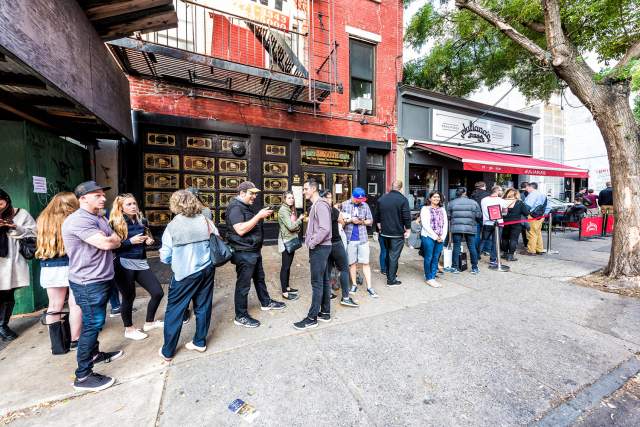Laurens Debo Wins Research Award for Queueing Paper
Debo, a professor of operations management, was honored for creating a model that could reduce wait times in restaurants and other service industries.

Debo’s research focuses on the behavior of consumers and providers in different service settings. At Tuck, he teaches the Management of Service Operations course.
Even amid these polarizing times, there is one thing we can all agree on: nobody likes waiting in line.
Most people take it for granted that lines are an unavoidable part of life, but not Tuck professor Laurens Debo. As a specialist in the area of service operations—he teaches a course by the same name at Tuck—Debo looks for inefficiencies in the relationship between customers and businesses. It turns out that a first-come, first-served line, like the one you find in a restaurant or entertainment venue, is fair in a cultural sense, but economically inefficient. In his paper “Trading Time in a Congested Environment,” which was published in Management Science in 2017, Debo and his co-authors suggest a better way to deal with lines: let customers pay each other to trade spots.
As an acknowledgement of the groundbreaking potential of this idea, and the analytical model the authors developed to prove its worth, the Service Management Special Interest Group (SIG) of the Manufacturing and Service Operations Management (MSOM) Society recently named it the best published paper on service management.
In praise of the paper, Manpreet Hora, the chair of the MSOM Service Management SIG award committee, says: “This paper focuses on queuing and has an excellent model that proposes insightful mechanisms that consider peer-to-peer trading of queue positions among customers. In doing so, the study not only builds a robust analytical framework but also has far-reaching implications on reorganizing waiting lines.”
While there is something inherently fair about first-come, first-served, its central inefficiency is that it promulgates the fiction that everyone’s time is worth the same amount. “From a societal and business perspective,” says Debo, “you should give priority to people whose time is more expensive.” The main theme of the paper, therefore, is how to accomplish that.
Some service providers have already attempted to put a price on customers’ time. One well-known example is the FastPass at Walt Disney World, where customers pay a higher ticket price to move through the lines at the attractions faster. This is good for Disney, which reaps higher revenues, but can breed ill will from other customers who can’t afford the luxury of skipping the line. Another example is the British telecommunications company EE, which launched a service called “Priority Answer,” where customers waiting for service could pay the company a modest amount to jump the line. As the co-authors explain in the paper, this feature created an uproar because “the proceeds go to the service provider, yet a longer wait time is inflicted on the non-paying customers.”
In contrast to clamoring crowds bargaining for a better deal, customers can trade on a mobile platform without wreaking too much havoc in a queue. This is even more appealing when customers use the mobile app to join queues remotely so there will be little scope for chaotic transactions.
The solution the co-authors propose is to allow the customers to pay each other and trade spots in line. A customer who wants to move ahead in line could, potentially, pay other customers who don’t mind waiting. And the impatient customer could do this until no one else is willing to sell their spot, at which point an equilibrium would be reached. “The ones who value their time the most are in front, and the ones who value their time the least would be at the back,” Debo says.
Administering such a system is probably beyond the ken of most service providers, so Debo and his colleagues suggest that an intermediary, such as a software firm, should offer a two-sided platform in the form of a mobile device app. “In contrast to clamoring crowds bargaining for a better deal,” the authors write, “customers can trade on a mobile platform without wreaking too much havoc in a queue. This is even more appealing when customers use the mobile app to join queues remotely so there will be little scope for chaotic transactions.”
In order for such a system to work, customers will pay a trade participation fee to join an auction, run by the platform, and submit a bid that represents “the least amount she wants to receive for expecting to wait one additional unit of time and also the greatest amount she is willing to pay for one unit of the expected waiting time reduced,” says Debo. It turns out that a profit-maximizing platform will bar customers from bidding inside a certain interval. This is a consequence of a well-known incentive for an intermediary running a bi-lateral trade platform to restrict trade in order to increase the margins.
“We show that the intermediary’s trading mechanism always strictly improves the service provider’s revenue relative to a FIFO [first-in, first-out] system despite the intermediary’s revenue-maximizing nature,” the co-authors conclude. “This is a potentially powerful sales argument the intermediary can make to convince the service provider of installing the platform.”

